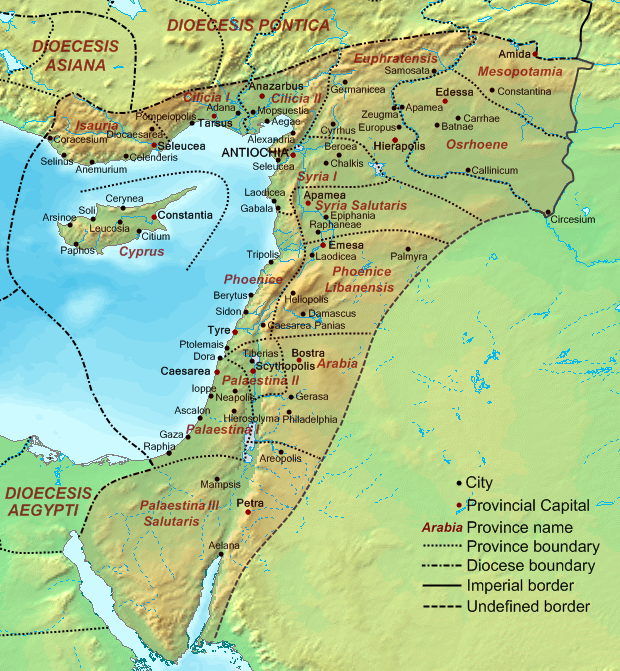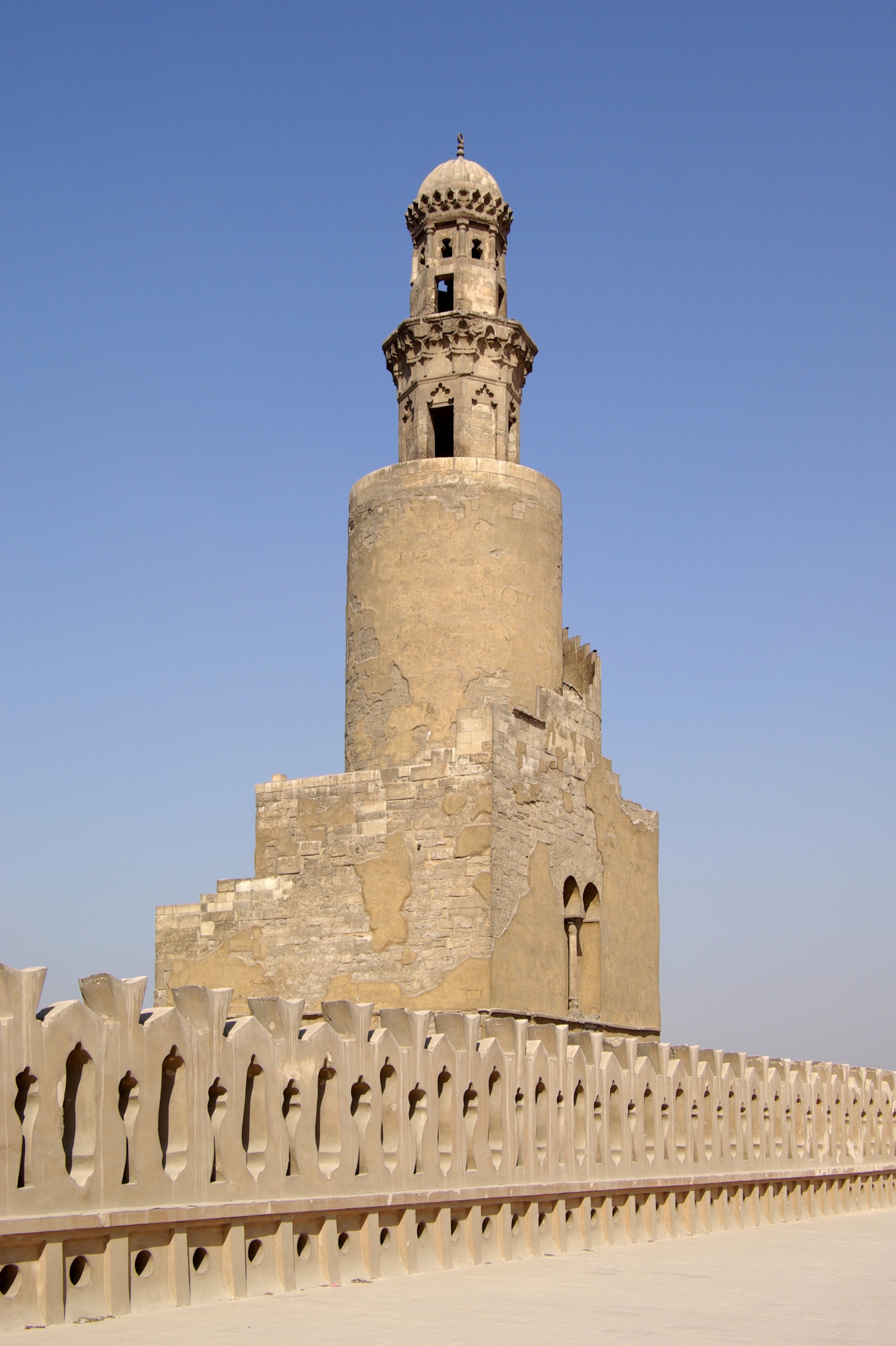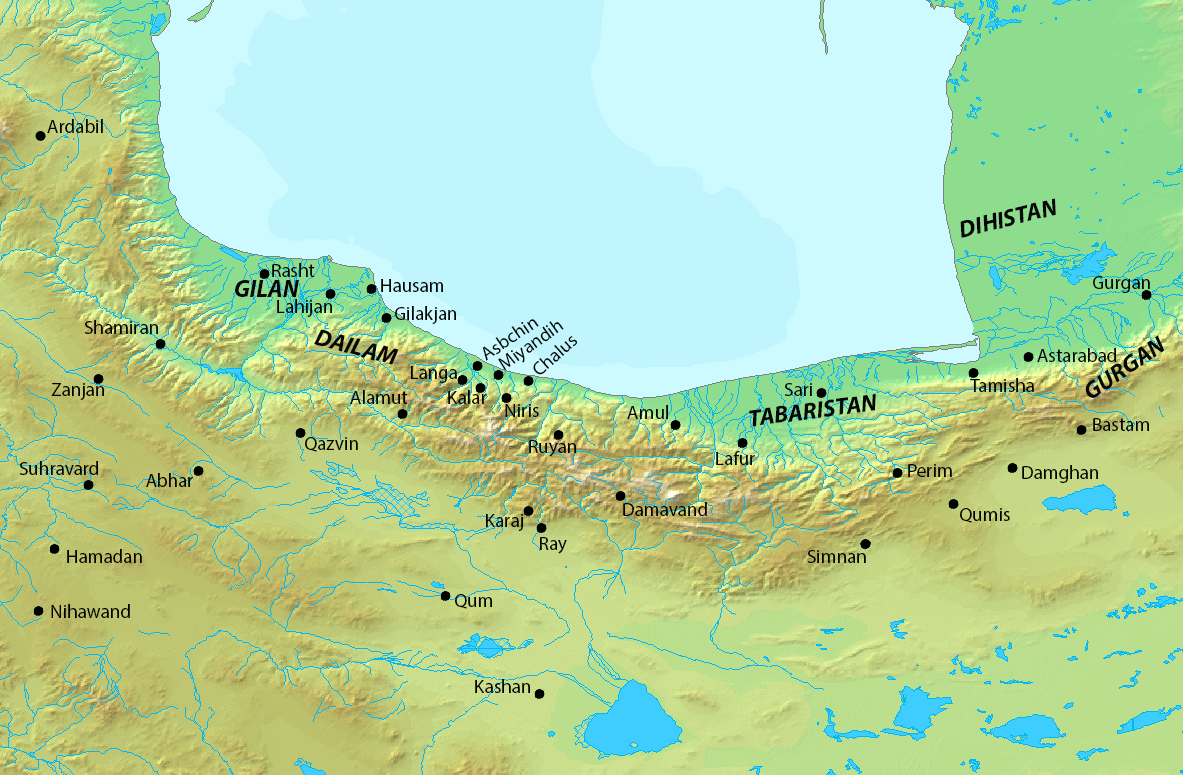|
Al-Fadl Ibn Ja'far Ibn Al-Furat
Abu'l-Fath al-Fadl ibn Ja'far ibn al-Furat () (died 938), also called with the matronymic Ibn Hinzaba, was a member of the bureaucratic Banu'l-Furat family from Iraq, who served twice as vizier of the Abbasid Caliphate. Family Abu'l-Fath al-Fadl ibn Ja'far ibn al-Furat was the scion of a bureaucratic dynasty, the Banu'l-Furat, that had occupied senior posts in the fiscal bureaucracy of the Abbasid Caliphate at Baghdad since the reign of Caliph al-Mu'tadid () and had gone on to become one of the two major factions within the Abbasid administrative elite in the first decades of the 10th century. Fadl's father, Abu'l-Khattab Ja'far, was head of the land department for the East and West from 908 until his death in 909/10, while his uncle was the famous Abu'l-Hasan Ali, who served three times as vizier to Caliph al-Muqtadir. Fadl was often called "Ibn Hinzaba" after his mother. From this the branch of the family he founded is usually called "Banu Hinzaba". Early career Fadl repla ... [...More Info...] [...Related Items...] OR: [Wikipedia] [Google] [Baidu] |
Matronymic
A matronymic is a personal name or a parental name based on the given name of one's mother, grandmother, or any female ancestor. It is the female equivalent of a patronymic. Around the world, matronymic surnames are far less common than patronymic surnames. In some cultures in the past, matronymic last names were often given to children of unwed mothers. Or if a woman was especially well known or powerful, her descendants might adopt a matronym based on her name. A matronymic is a derived name, as compared to a matriname, which is an inherited name from a mother's side of the family, and which is unchanged. Terminology of English The word ''matronymic'' is first attested in English in 1794 and originates in the Greek μήτηρ ''mētēr'' "mother" ( GEN μητρός ''mētros'' whence the combining form μητρo- ''mētro''-), ὄνυμα ''onyma'', a variant form of ὄνομα ''onoma'' "name", and the suffix -ικός -''ikos'', which was originally used to form adjec ... [...More Info...] [...Related Items...] OR: [Wikipedia] [Google] [Baidu] |
Al-Husayn Ibn Al-Qasim
Al-Husayn ibn al-Qasim () was a senior official of the Abbasid Caliphate who served as vizier from September 931 until May 932. Life Hailing from the Banu Wahb, a family of Nestorian Christian origin that had served in the caliphal bureaucracy since late Umayyad times, al-Husayn was the son, grandson and great-grandson of viziers. The family however had lost power after the death of al-Husayn's father al-Qasim in 904. He was appointed to the vizierate and the title of Amid al-Dawla ("Mainstay/Pillar of the State") by Caliph al-Muqtadir () in September 931, with the support of the Banu'l-Furat faction against the rival faction around Ali ibn Isa al-Jarrah and the commander-in-chief Mu'nis al-Muzaffar. He quickly managed to win over Mu'nis' proteges, the chamberlain Muhammad ibn Ra'iq and his brother Ibrahim, and began plotting against Mu'nis. The latter tried to secure his dismissal from the caliph, and almost succeeded; it was only his demand that al-Husayn be exiled to Oman ... [...More Info...] [...Related Items...] OR: [Wikipedia] [Google] [Baidu] |
Muhammad Ibn Tughj Al-Ikhshid
Abū Bakr Muḥammad ibn Ṭughj ibn Juff ibn Yiltakīn ibn Fūrān ibn Fūrī ibn Khāqān (8 February 882 – 24 July 946), better known by the title al-Ikhshīd () after 939, was an Abbasid commander and governor who became the autonomous ruler of Egypt and parts of Syria (Levant) from 935 until his death in 946. He was the founder of the Ikhshidid dynasty, which ruled the region until the Fatimid conquest of 969. The son of Tughj ibn Juff, a general of Turkic origin who served both the Abbasids and the autonomous Tulunid rulers of Egypt and Syria, Muhammad ibn Tughj was born in Baghdad but grew up in Syria and acquired his first military and administrative experiences at his father's side. He had a turbulent early career: he was imprisoned along with his father by the Abbasids in 905, was released in 906, participated in the murder of the vizier al-Abbas ibn al-Hasan al-Jarjara'i in 908, and fled Iraq to enter the service of the governor of Egypt, Takin al-Khazari. Even ... [...More Info...] [...Related Items...] OR: [Wikipedia] [Google] [Baidu] |
Bilad Al-Sham
Bilad al-Sham (), often referred to as Islamic Syria or simply Syria in English-language sources, was a province of the Rashidun, Umayyad, Abbasid, and Fatimid caliphates. It roughly corresponded with the Byzantine Diocese of the East, conquered by the Muslims in 634–647. Under the Umayyads (661–750), Bilad al-Sham was the metropolitan province of the Caliphate and different localities throughout the province served as the seats of the Umayyad caliphs and princes. Bilad al-Sham was first organized into the four '' ajnad'' (military districts; singular ''jund'') of Dimashq (Damascus), Hims (Homs), al-Urdunn (Jordan), and Filastin (Palestine), between 637 and 640 by Caliph Umar following the Muslim conquest. The ''jund'' of Qinnasrin was created out of the northern part of Hims by caliphs Mu'awiya I () or Yazid I (). The Jazira (Upper Mesopotamia) was made an independent province from the Mesopotamian part of Qinnasrin by Caliph Abd al-Malik in 692. In 786, the ''j ... [...More Info...] [...Related Items...] OR: [Wikipedia] [Google] [Baidu] |
Medieval Egypt
Following the Muslim conquest of Egypt, Islamic conquest in 641-642, Lower Egypt was ruled at first by governors acting in the name of the Rashidun Caliphs and then the Umayyad Caliphs in Damascus, but in 750 the Umayyads Abbasid Revolution, were overthrown. Throughout Islamic rule, Al-Askar, Askar was named the capital and housed the ruling administration. The conquest led to two separate provinces all under one ruler: Upper Egypt, Upper and Lower Egypt. These two very distinct regions were governed by the military and followed the demands handed down by the governor of Egypt and imposed by the heads of their communities. Egypt was ruled by many dynasties from the start of Islamic control in 639 until the early 16th century. The Umayyad period lasted from 658 to 750. The Abbasid period which came after was much more focused on taxes and centralizing power. In 868, the Tulunids, ruled by Ahmad ibn Tulun, expanded Egypt's territory into the Levant. He would rule until his death in ... [...More Info...] [...Related Items...] OR: [Wikipedia] [Google] [Baidu] |
Al-Radi
Abu'l-Abbas Muhammad ibn Ja'far al-Muqtadir (; 1 January 909 – 23 December 940), usually simply known by his regnal name al-Radi bi'llah (), was the twentieth Caliph of the Abbasid Caliphate, reigning from 934 to his death. He died on 23 December 940 at the age of 31. His reign marked the end of the caliph's political power and the rise of military strongmen, who competed for the title of . Early life The future al-Radi was born on 20 December 909, to the caliph al-Muqtadir () and a Greek-born slave concubine named Zalum. At the age of four, he received the nominal governorship of Egypt and the Maghreb, and was sent with the commander-in-chief Mu'nis al-Muzaffar to Egypt, who became his tutor. When Mu'nis and al-Muqtadir fell out in 927, Abu'l-Abbas and the vizier Ibn Muqla tried to mediate between his father and the powerful commander-in-chief, but to no avail. In 930, Abu'l-Abbas received the governorship over Syria from his father, although he remained in Baghdad, residi ... [...More Info...] [...Related Items...] OR: [Wikipedia] [Google] [Baidu] |
Al-Qahir
Abū al-Manṣūr Muḥammad ibn Aḥmad ibn Ṭalḥa ibn Jaʿfar ibn Muḥammad ibn Hārūn al-Qāhir bi'Llāh (), usually known simply by his regnal title al-Qahir bi'Llah (), was the nineteenth caliph of the Abbasid Caliphate from 932 to 934. He was born 286 AH (899 C.E.) and died 339 AH (950 C.E.). Early life Al-Qahir was a son of the 16th Abbasid caliph, al-Mu'tadid (), and brother of the 18th Caliph, al-Muqtadir (). The mother of al-Qahir was a concubine called Fitnah. His full name was Muhammad ibn Ahmad al-Mu'tadid al-Qahir bi'llah, and his was Abu Mansur. Rise to the throne Al-Qahir came to the throne as part of his brother's conflict with the increasingly powerful commander-in-chief, Mu'nis al-Muzaffar. He was first chosen as Caliph in March 929, when Mu'nis launched a coup and deposed al-Muqtadir. Although al-Muqtadir was restored after a few days, Mu'nis now possessed virtually dictatorial authority over the Abbasid government. In 932, after another bre ... [...More Info...] [...Related Items...] OR: [Wikipedia] [Google] [Baidu] |
Muhammad Ibn Yaqut
Abu Bakr Muhammad ibn Yaqut () was an official who played a major role in the tumultuous political affairs of the Abbasid Caliphate in 930–935, particularly during the reign of al-Qahir (932–934) and the early months of the reign of ar-Radi, when he was the most powerful man in the state. His rivals secured his dismissal and imprisonment in April 935, and he died in prison soon after. Under al-Muqtadir Muhammad's father Yaqut was serving as head chamberlain (''hajib'') of Caliph al-Muqtadir () in 930, when Muhammad was appointed head of the security forces (''sahib al-shurta'') in the Abbasid capital, Baghdad, which at the time was plagued by armed clashes between rival factions in the military; during one such clash in February, Muhammad intervened on the side of the Hujariyya (Abbasid troops), Hujariyya cavalry, forcing their opponents of the infantry to abandon the city, except for a contingent of black African troops who surrendered. The latter mutinied because of pay arrears ... [...More Info...] [...Related Items...] OR: [Wikipedia] [Google] [Baidu] |
Qarmatians
The Qarmatians (; ) were a militant Isma'ili Shia movement centred in Al-Ahsa in Eastern Arabia, where they established a religious state in 899 CE. Its members were part of a movement that adhered to a syncretic branch of Sevener Ismaili Shia Islam, and were ruled by a dynasty founded by Abu Sa'id al-Jannabi. They rejected the claim of Fatimid Caliph Abdallah al-Mahdi Billah to imamate and clung to their belief in the coming of the Mahdi, and they revolted against the Fatimid and Abbasid Caliphates. Mecca was sacked by a Qarmatian leader, Abu Tahir al-Jannabi, outraging the Muslim world, particularly with their theft of the Black Stone and desecration of the Zamzam Well with corpses during the Hajj season of 930 CE. Name The origin of the name "Qarmatian" is uncertain. According to some sources, the name derives from the surname of the sect's founder, Hamdan Qarmat. The name ''qarmat'' probably comes from the Aramaic for "short-legged", "red-eyed" or "secret teach ... [...More Info...] [...Related Items...] OR: [Wikipedia] [Google] [Baidu] |
Al-Jazira (caliphal Province)
Al-Jazira (), also known as Jazirat Aqur or Iqlim Aqur, was a province of the Rashidun, Umayyad and Abbasid Caliphates, spanning at minimum most of Upper Mesopotamia (al-Jazira proper), divided between the districts of Diyar Bakr, Diyar Rabi'a and Diyar Mudar, and at times including Mosul, Arminiya and Adharbayjan as sub-provinces. Following its conquest by the Muslim Arabs in 639/40, it became an administrative unit attached to the larger district of Jund Hims. It was separated from Hims during the reigns of caliphs Mu'awiya I or Yazid I and came under the jurisdiction of Jund Qinnasrin. It was made its own province in 692 by Caliph Abd al-Malik. After 702, it frequently came to span the key districts of Arminiya and Adharbayjan along the Caliphate's northern frontier, making it a super-province. The predominance of Arabs from the Qays/Mudar and Rabi'a groups made it a major recruitment pool of tribesmen for the Umayyad armies and the troops of the Jazira played a key ... [...More Info...] [...Related Items...] OR: [Wikipedia] [Google] [Baidu] |
Persia
Iran, officially the Islamic Republic of Iran (IRI) and also known as Persia, is a country in West Asia. It borders Iraq to the west, Turkey, Azerbaijan, and Armenia to the northwest, the Caspian Sea to the north, Turkmenistan to the northeast, Afghanistan to the east, Pakistan to the southeast, and the Gulf of Oman and the Persian Gulf to the south. With a Ethnicities in Iran, multi-ethnic population of over 92 million in an area of , Iran ranks 17th globally in both List of countries and dependencies by area, geographic size and List of countries and dependencies by population, population. It is the List of Asian countries by area, sixth-largest country entirely in Asia and one of the world's List of mountains in Iran, most mountainous countries. Officially an Islamic republic, Iran is divided into Regions of Iran, five regions with Provinces of Iran, 31 provinces. Tehran is the nation's Capital city, capital, List of cities in Iran by province, largest city and financial ... [...More Info...] [...Related Items...] OR: [Wikipedia] [Google] [Baidu] |
Mardavij
Mardavij ( Gilaki/, meaning "man assailant") was an Iranian prince, who established the Ziyarid dynasty, ruling from 930 to 935. Born to a Zoroastrian family native to Gilan, Mardavij sought to establish a native Iranian Zoroastrian empire akin to the Sasanian Empire that had been conquered in the 7th century by the Rashidun Caliphate and subsequently ruled by Muslims. He first started his career by joining the army of his kinsman Asfar ibn Shiruya. Mardavij, however, later betrayed and killed him, conquering much of Jibal. He then set out to conquer Hamadan, Dinavar and Isfahan from the Abbasid Caliphate, and thereafter declared himself king of Iran, making Isfahan his capital. He then defeated the Daylamite military leader Makan ibn Kaki, and conquered Tabaristan in 932. By 934, his authority was acknowledged as far as Shiraz and Ahvaz. However, his goal of recreating the Iranian Empire was ruined when he was murdered by his own Turkic slaves in 935. Background Mardavij ... [...More Info...] [...Related Items...] OR: [Wikipedia] [Google] [Baidu] |


